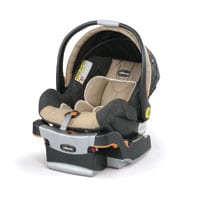Have an eco-friendly pregnancy and birth
You’re pregnant – that’s great! There’s a massive consumer marketplace designed with every conceivable product and device to make your pregnancy and parenting as easy and simple as possible. But if you’re concerned about the impact of this mass manufacturing culture on the environment, there are some simple steps you can take today to have an eco-friendly pregnancy and birth and make it as ‘green’ as possible for you and your baby.
Ask yourself what you really need to buy and what you simply want to buy. Your baby’s crib, car seat, and carrier or stroller are among the most basic products you’ll use daily. Before you go crazy with the baby registry, ask friends and other parents you admire what they consider to be the essential baby gear. Then consider whether these essentials are items you can recycle from older children, neighbors, or baby/child consignment shops?
SEE ALSO: How to Create an Eco-Friendly Nursery
Three big cautions, though, when it comes to using second-hand baby products:
-
- Avoid second-hand cribs or car seats. Your baby’s crib and car seat are the two most important safety items you will use with your baby. It’s best to avoid using a second hand car seat, especially if you don’t know the history of the seat. Second hand cribs should also be avoided if possible, unless they were made after 1999, have all fixed sides, and are assembled correctly using all the parts. Drop-down-side cribs shouldn’t be used as they have been found to be dangerous for babies.
- Check to be sure the item has not been recalled. Don’t rely on others to do this for you. In 2008, 43% of all recalls involved child products. Go to the Consumer Product Safety Commission at www.cpsc.gov to check for recalls.
- Inspect the item carefully. Be sure it appears to have all the parts and that you have access to the owner’s manual. Understanding correct assembly and any safety precautions is critical. Most times, the manufacturer can be contacted for replacement owner’s manuals or you can find the manual online.
SEE ALSO: Buckle Up: Car Seat Safety and
The main problem with some of the newest products on the market is that they simply haven’t been tested for their safety and usefulness. So, to save money and reduce consumption, consider passing on these items:
-
- Bumper pads: These often come with new crib bedding but serve a better purpose as wall-art. Bumpers are dangerous in cribs as they can pose a strangulation or suffocation risk; even the new breathable bumpers have not been safety tested.
- Co-sleepers: Bassinets, cradles, and co-sleepers are not required to be safety tested like their big crib cousins. Currently, the only safe sleeping environment for your baby is in a safety-approved crib. One crib to consider: the Stokke crib is environmentally friendly, converts to a toddler bed for use through the age of 7, and fits through standard doorways. Mom can bring crib into her room to facilitate breastfeeding and bonding and still be sure baby is in a safe sleep environment.
- Sleep positioners: these products haven’t been tested for safety or usefulness and some have been linked to suffocation.
- Car seat accessories: who isn’t tempted to strap in soft strap covers, hanging toys, mirrors, and seat protectors to make baby’s car seat environment more comfortable and entertaining? But unless these items come in the box with your car seat, don’t use them as they haven’t been tested with your particular seat. Using them can void your car seat warranty and may decrease the overall safety of your baby while in them.
- Bottle sterilizers – for babies born at term, healthy babies, a dishwasher is sufficient to clean baby bottles.
Glass bottles are always an option and if you’re concerned about breakage, look for the ones with a silicone outer sleeve.
Keep in mind that BPA is also found in the linings of formula cans and can get into the product. You might want to opt for powdered formulas, which typically contain lower levels of BPA than liquid formulas.
Lastly, choose nipples and pacifiers that are latex-free to prevent a possible latex allergy from developing.
Smart Nursery: How Smart Is Your Baby’s Nursery?
Making Your Home Comfortable for Baby
Steps After Bringing Baby Home
Keeping Baby Safe from the Start
Remember to check out the other articles in our Newborn Care section
About the author: Kim Wilschek, RN, CCE, is a clinical nurse manager in women’s programs and education at Northwestern Memorial Hospital in Chicago, IL. She’s also an expert advisor to Health4Mom.org and Healthy Mom & Baby magazine.






Comments are closed.